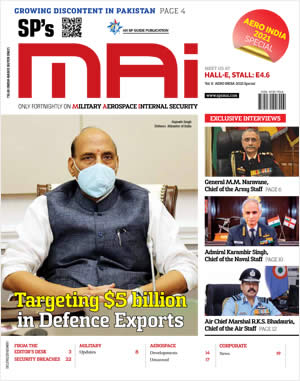INDIAN ARMED FORCES CHIEFS ON OUR RELENTLESS AND FOCUSED PUBLISHING EFFORTS
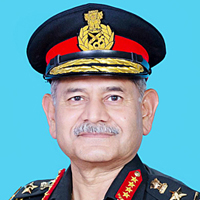
The insightful articles, inspiring narrations and analytical perspectives presented by the Editorial Team, establish an alluring connect with the reader. My compliments and best wishes to SP Guide Publications.
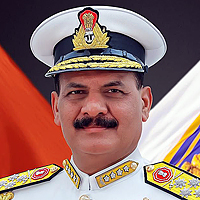
"Over the past 60 years, the growth of SP Guide Publications has mirrored the rising stature of Indian Navy. Its well-researched and informative magazines on Defence and Aerospace sector have served to shape an educated opinion of our military personnel, policy makers and the public alike. I wish SP's Publication team continued success, fair winds and following seas in all future endeavour!"

Since, its inception in 1964, SP Guide Publications has consistently demonstrated commitment to high-quality journalism in the aerospace and defence sectors, earning a well-deserved reputation as Asia's largest media house in this domain. I wish SP Guide Publications continued success in its pursuit of excellence.
- Prime Minister Modi Visits Punjab’s Adampur Air Base, Interacts with Airmen after Successful ‘Operation Sindoor’; Stern Message to Pakistan
- The layered Air Defence systems that worked superbly, the key element of Operation Sindoor
- Operation Sindoor | Day 2 DGMOs Briefing
- Operation Sindoor: India strikes back with Precision and Purpose
- Operation Sindoor: Resolute yet Restrained
- India’s Operation Sindoor Sends a Clear Message to Terror and the World – ‘ZERO TOLERANCE’
- Japan and India set forth a defence cooperation consultancy framework, talks on tank and jet engines
- Terrorist Attack in Pahalgam in Kashmir: Unfolding a long surgical war against PAK
- Lt General Pratik Sharma takes over Command of Indian Army's Northern Command
Defence Budget, Capability and Perspective Planning for the Indian Armed Forces
A sizeable budget which stands at $78 billion, with 26.43 per cent of total allocation spent on capital outlay on Defence Services. The new dimension is the approach towards joint perspective planning of services for the military budget and a clear thrust on R&D allocation matters. How are we going about it?
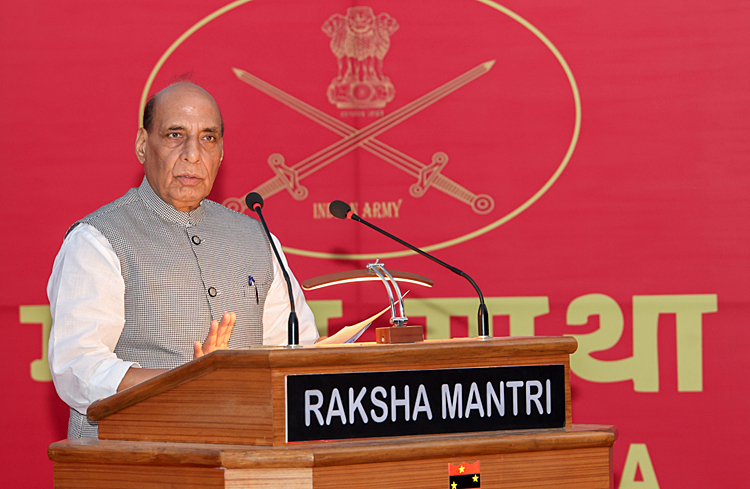
Overview of Finances:
The government of India announced a defence budget of ₹6.81 trillion for 2025-26, roughly ($78.4 billion). The Ministry of Defence (MoD) said the new budget represents about 13.5 per cent of total annual government expenditure and an increase of 9.5 per cent over the defence budget for 2024-25. The capital budget for modernisation—procuring new fighter jets, drones, artillery guns, tanks, and helicopters—remains at ₹1.80 lakh crore. Now what is required? Where is it heading in terms of R&D? Does it outline India's quest for building advanced and critical technologies?
The swinging defence budget
This is the third largest defence budget in the world, only below the too-big spenders and vast economic powers- the US and China. So, how does one see the defence budget in the last three to four years? Is it adequate to meet the capability roadmap of the Forces?
In 2025-26, India is estimated to spend 1.9 per cent of its GDP on defence. The capital outlay has remained below 30 per cent of the defence budget.
On the Defence Budget, in a crucial report, the Standing Committee on Defence (2018) remains the guiding principle to look forward to higher allocation or upticks. It recommended that the Ministry of Defence should be allocated a fixed budget of about three per cent of GDP. In 2025-26, India is estimated to spend 1.9 per cent of its GDP on defence. The capital outlay has remained below 30 per cent of the defence budget.
However, here is the caveat: ₹13,000 crore is returned to the finance ministry which could not be spent by the military. So, in such an irony, the budget looks sufficient within such provisions.
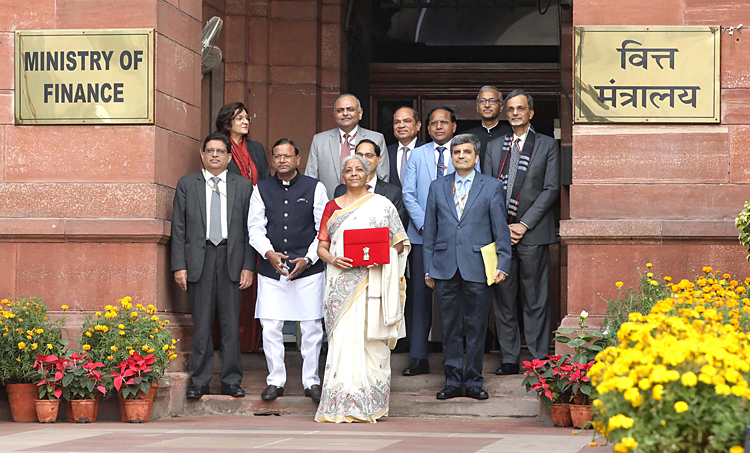
This also calls for greater focus to integrate the capabilities of the three services to ensure synergy of effort, optimisation of resources and jointness in the conduct of operations and in the context of perspective planning and budget for that.
There are some immediate challenges and the government has set serious targets towards achieving advancement in critical technologies in the next few years.
Indeed, that is the need of the hour to see "jointness in the budget'. Vice Admiral Sanjay Vatsayan, Deputy Chief of Integrated Defence Staff (PP & FD) at HQ IDS looks at it from the perspectives of three services and explains very clearly to way forward is joint budgetary discussion and roadmap.
Q. What is the military's long-term perspective plan?
A. The defence budget must look at the long-term perspective plans and how they align with the nature of conflict today, mostly about a hybrid/asymmetrical conflict or limited war. Also, a closer look at the operational mechanism where the military looks at the smarter, autonomous, and new age platforms and systems at the core, rather than a force multiplier. For example, a directed energy, laser-laced weapon is going to be more effective in a limited war situation than a massive air defence system of hundreds of tonnages with logistics nightmares.
However, important to put along, as pointed out by Lt Genenral Vipul Shinghal, Deputy Chief of Integrated Defence Staff (DOT) at HQ IDS, in an interaction with the author, "The full-scale conflict is undeniable—look at the Russian-Ukraine war."
Even from such a perspective, the military's goal and defence budget must synchronise and prioritise programmes around autonomous machines— ROVs, UAVS, C-UCVs, lighter platforms but effective -lethal and cost-effective based on cutting-edge mil-tech.

Budget does have a certain direction including Cyber & Space and emerging technologies such as Artificial Intelligence (AI), Machine Learning and Robotics etc. Furthermore, defence budget does outline our conventional capability roadmap and some major acquisitions planned in the next year such as Long Endurance Remotely Piloted Aircraft of High and Medium altitude, stage payment of Deck-based Aircraft, next-generation submarines/ships/platforms will be funded out of this allocation.
There are some immediate challenges and the government has set serious targets towards achieving advancement in critical technologies in the next few years.
The budgetary allocation to the Defence Research and Development Organisation (DRDO) has been increased to ₹26,816.82 crore in FY 2025-26 from ₹23,855.61 crore in FY 2024-25 which is 12.41 per cent higher than the BE of 2024-25.
Then what is required to build advanced and critical technologies like jet engines, propulsion systems, 5 Gen combat jets, and MALE/HALE drones, advanced materials, directed energy technology among such?
Q. R&D efforts and blues
A. However, a higher thrust and greater budget for defence R&D is something India has to plan out --very seriously.
So critical to discuss such a matter. The Prime Minister has laid out his vision for self-reliance in military technology and achieving scale in critical and advanced technology for India by 2047.
Additionally, Defence Minister has declared 2025 as the "Year of Reforms", and promoting jointness and integration. What are we going to witness on the technology front?
The goal requires a radical approach now to gear for 2047. And, it is good to have a vision and timeline.
The budgetary allocation to the Defence Research and Development Organisation (DRDO) has been increased to ₹26,816.82 crore in FY 2025-26 from ₹23,855.61 crore in FY 2024-25 which is 12.41 per cent higher than the BE of 2024-25. Out of this, a share of ₹14,923.82 crore has been allocated for capital expenditure and to fund the R&D projects.
As the world's fifth largest economy, India's, R&D expenditure as a percentage of GDP stands at just 0.64 per cent. The world average R&D investment data is: China (2.41 per cent), the US (3.47 per cent), and Israel (5.71 per cent).
Importantly, a substantial share of the modernisation budget is being earmarked for capital procurement from domestic players, and the private sector for manufacturing and technological development in the defence sector. Accordingly, for FY 2025-26, ₹1,11,544.83 crore i.e. 75 per cent of the modernisation budget has been earmarked for procurement through domestic sources and 25 per cent of domestic share i.e. ₹27,886.21 crore has been provisioned for procurement through domestic private industries.
Now let's see the proportion, the domestic players spend on R&D in technological development.
Overall, as the world's fifth largest economy, India's, R&D expenditure as a percentage of GDP stands at just 0.64 per cent. The world average R&D investment data is: China (2.41 per cent), the US (3.47 per cent), and Israel (5.71 per cent).
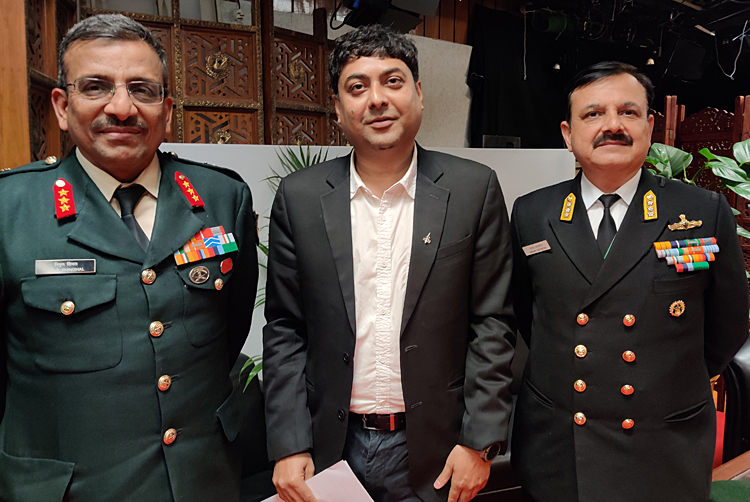
Further, sadly, the private sector's contribution to R&D in India is at 36.4 per cent of the country's gross expenditure on R&D (GERD), whereas China and the US have contributions of 77 per cent and 75 per cent, respectively. Adding to the scene are major flaws of Indian academics barring a few best well-known—IITS and IIS. Some of them are just even trying to reinvent the wheel with labs just producing enough to somehow maintain the basics—forget the breakthroughs.
Do we need to further look at China's budget with $296 billion China spent 3.4 per cent of its GDP on the military. But that is not a statistical comparison, it is about how China has prioritised its R&D, reverse engineering, and advanced production to staggering proportions and all we can see is their military transformation.
Q. Global tech collaboration
A. On top of that, a very crucial aspect is the clear path towards global collaboration—not a transfer of technologies but creating advanced systems together based on next-generation technology for achieving the capabilities for tec-based war.
All major global military programs like the Global Combat Air Programme (GCAP) the Next Generation Air Dominance (NGAD) and the AUKUS nuclear submarine deal to name a few require global collaboration to develop advanced technologies.
All major global military programs like the Global Combat Air Programme (GCAP) the Next Generation Air Dominance (NGAD) and the AUKUS nuclear submarine deal to name a few require global collaboration to develop advanced technologies. These programmes are intended to be an equal partnership between the member nations. The programme's goal is to deliver cost-effective, highly advanced, and effective systems in the near future.
So, the leadership in India must look at our programmes like AMCA, Tejas-2, engine, propulsions, autonomous aerial, and underwater systems. That not only instils competitiveness, accountability and technological leapfrog as India genuinely harbours such ambitions.
Overall, the defence budget has set forth a routine framework. Rest, it is about putting firepower in the areas that have no substitute based on joint perspective planning and force structure and futuristic technological assimilation.
Manish Kumar Jha is a Consulting & Contributing Editor for SP's Aviation, SP's Land Forces and SP's Naval Forces and a security expert. He writes on national security, military technology, strategic affairs & policies.





